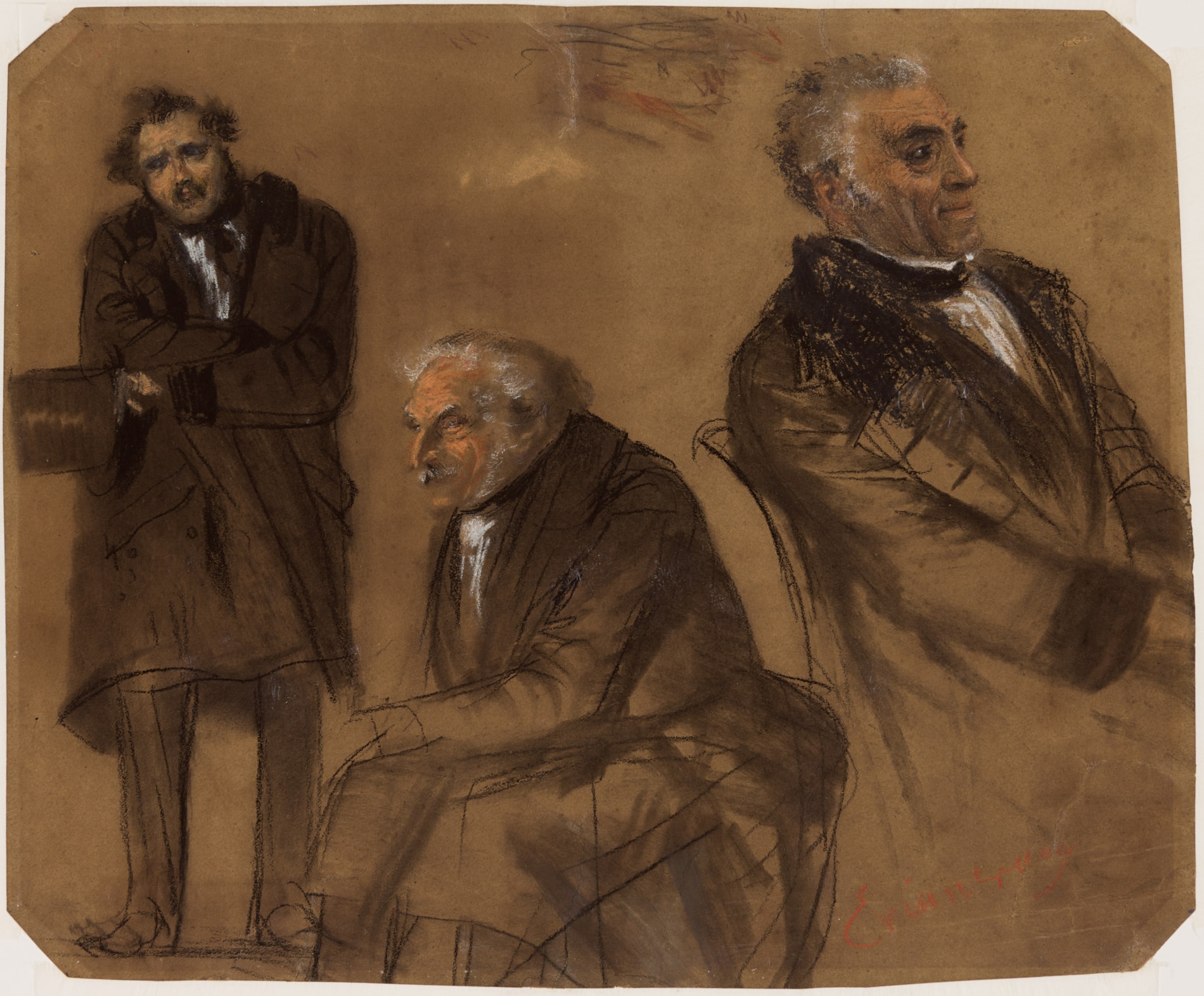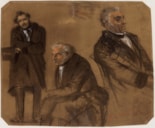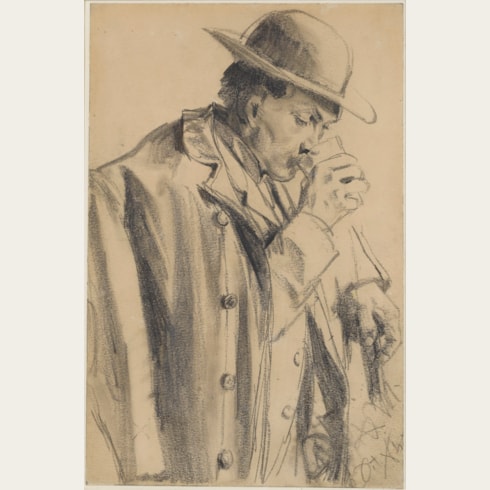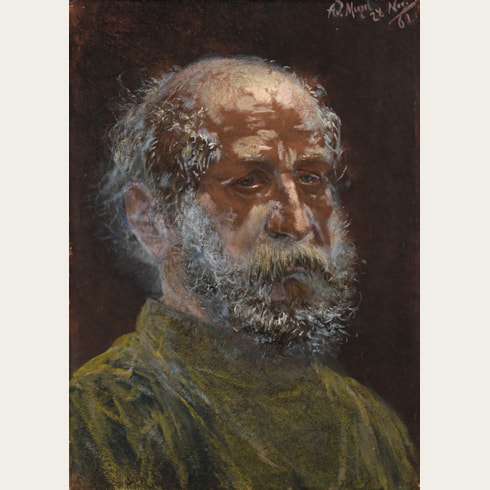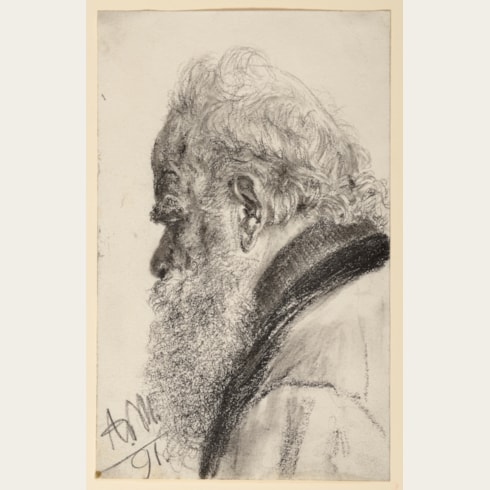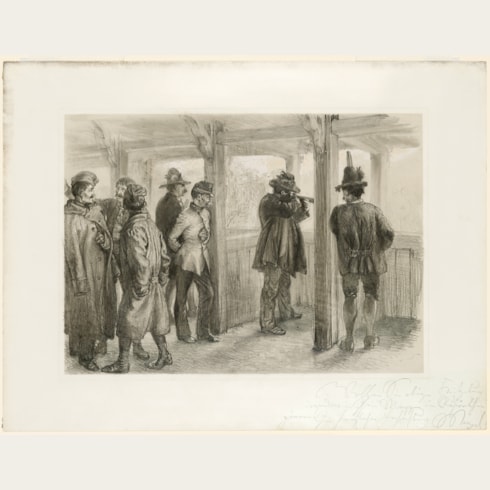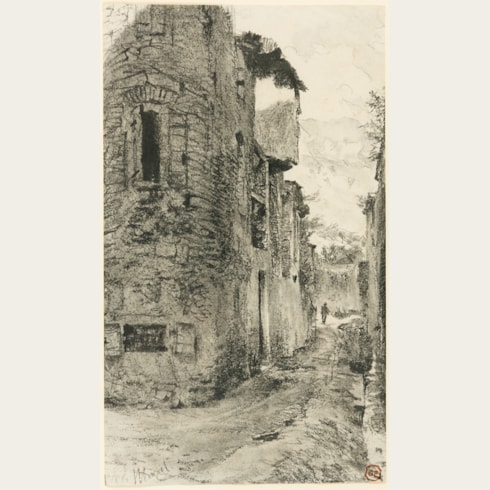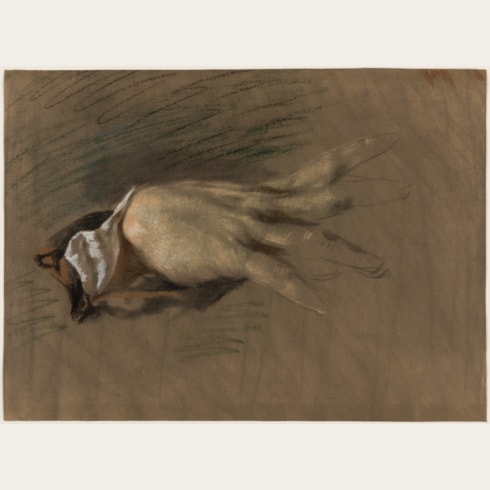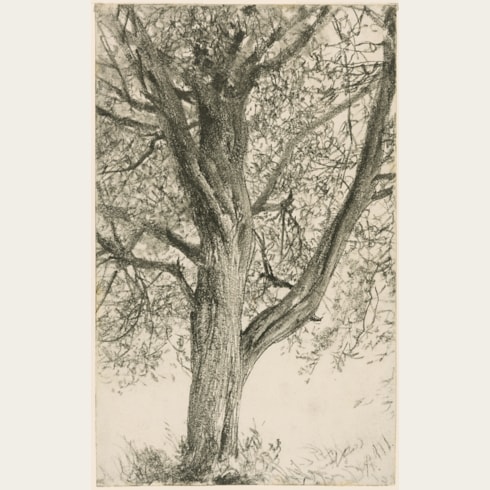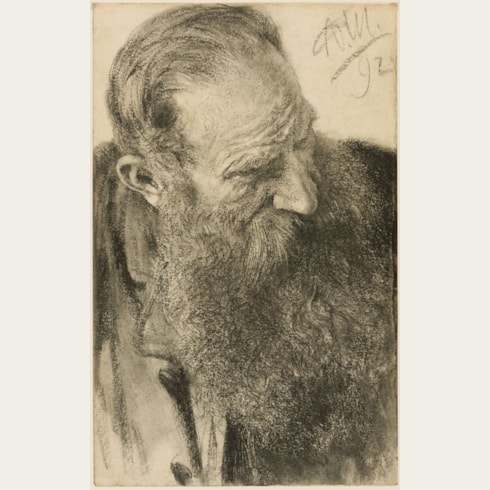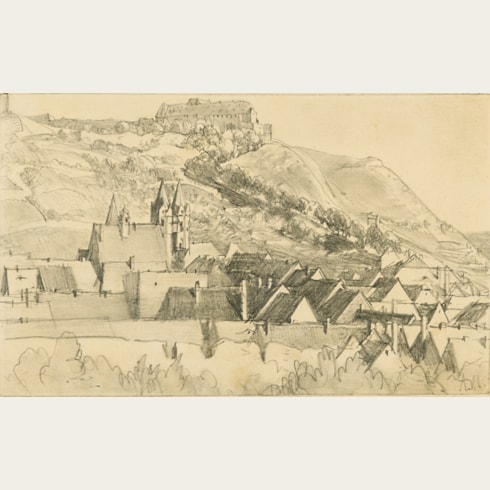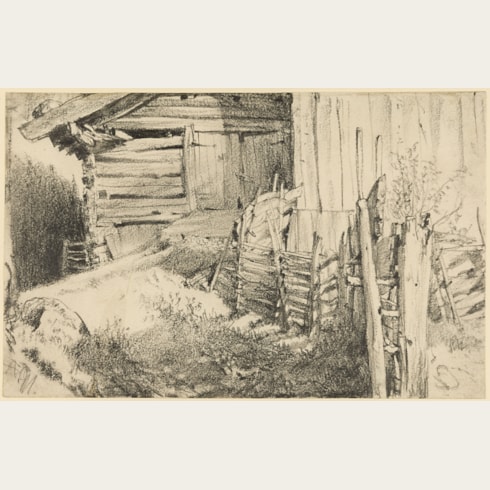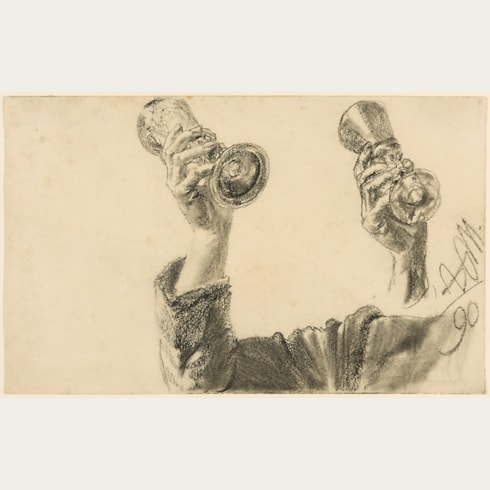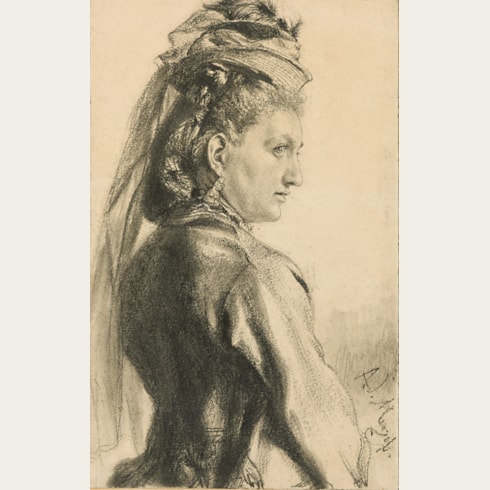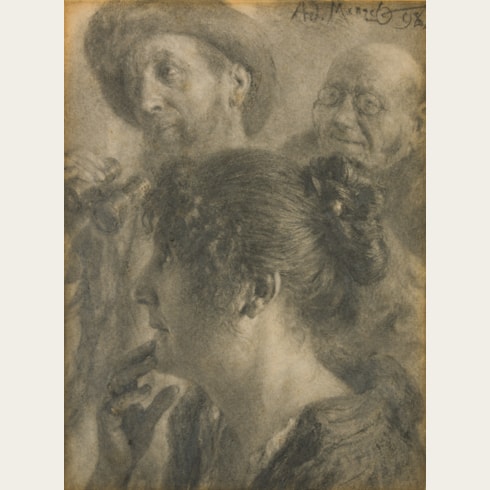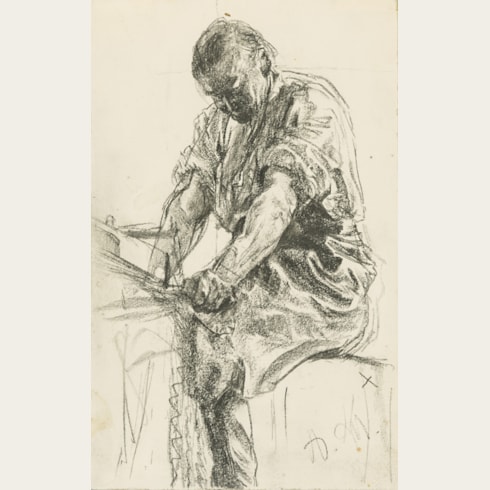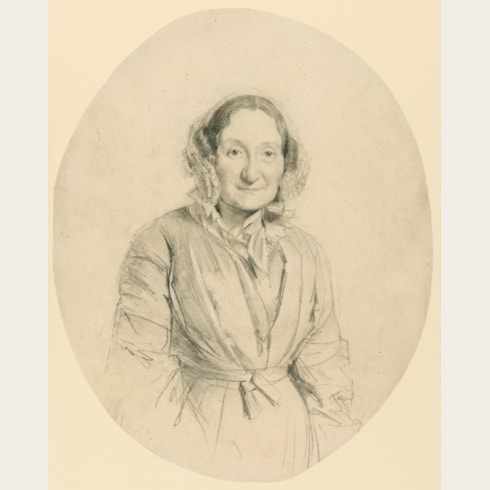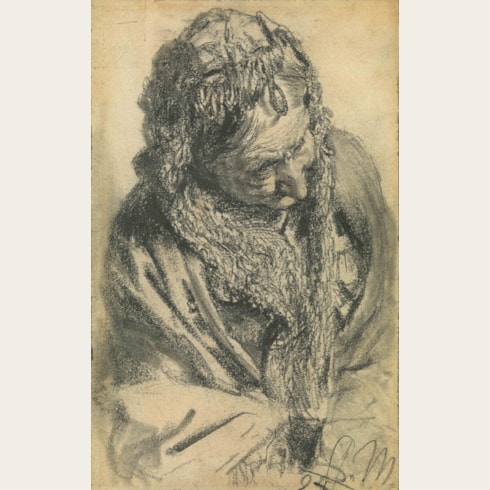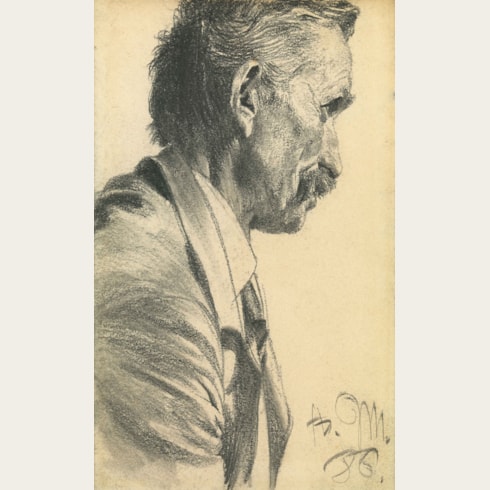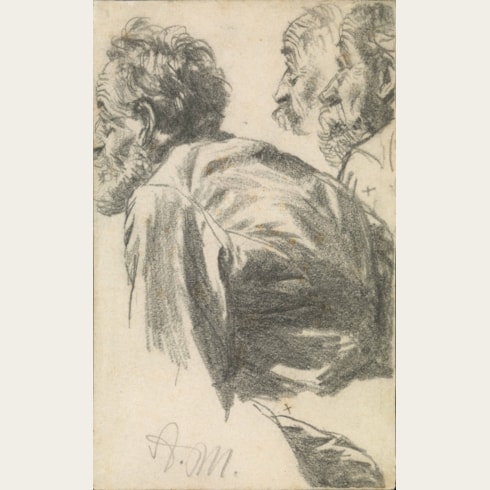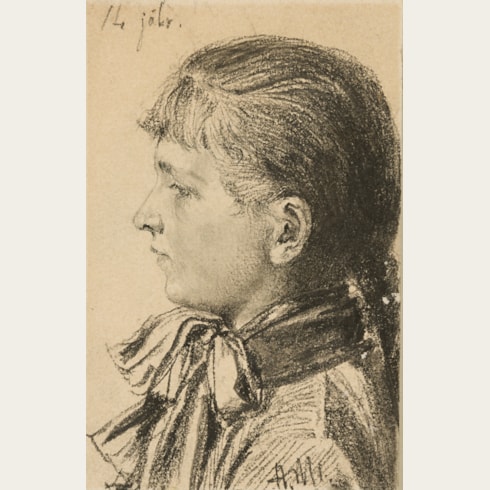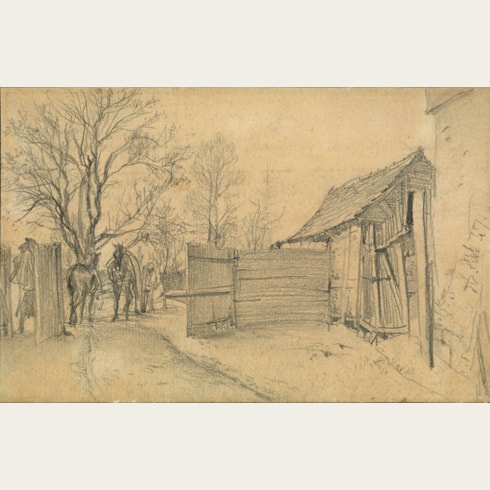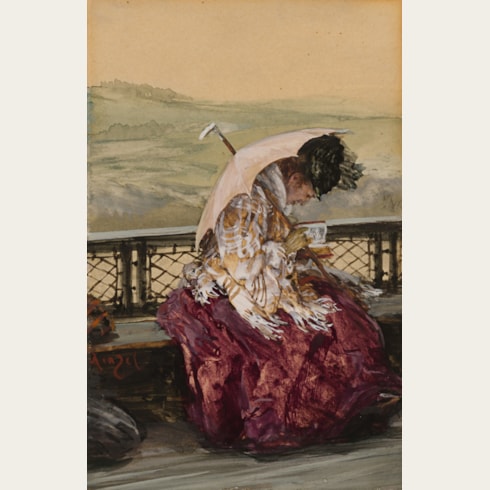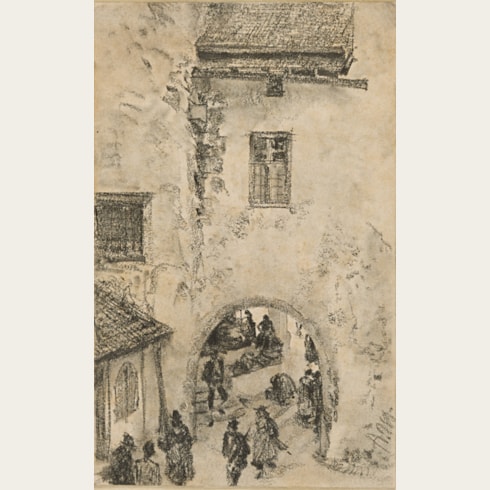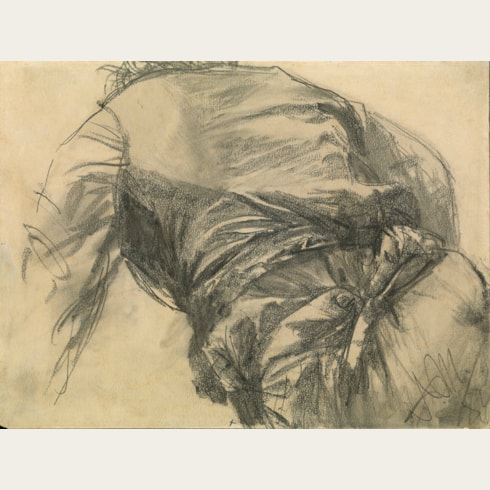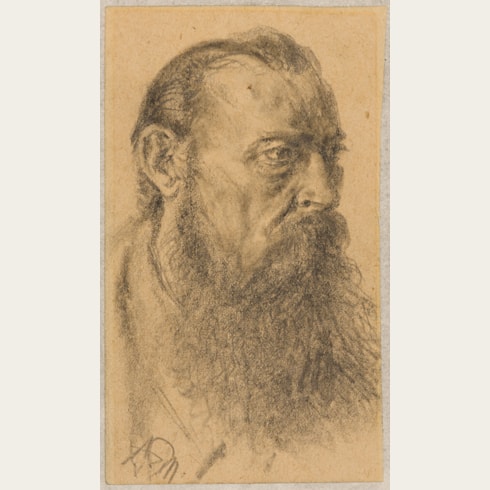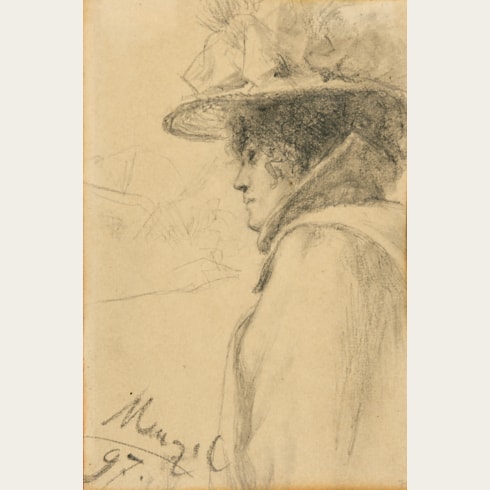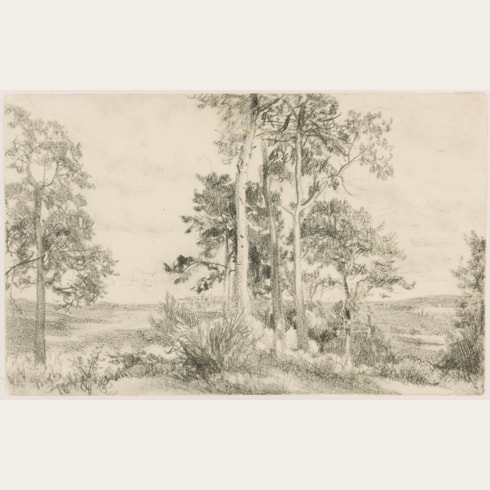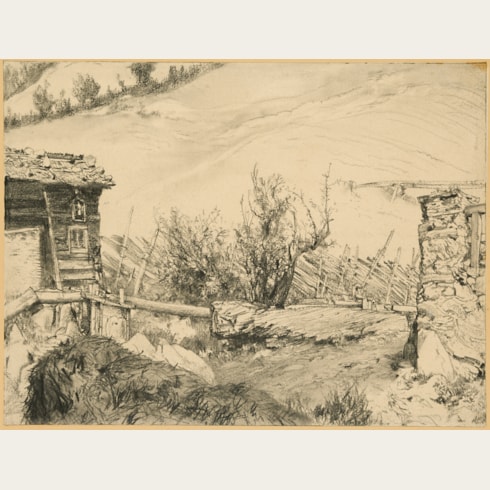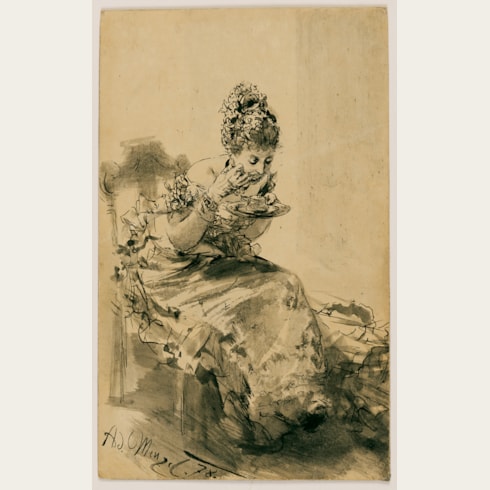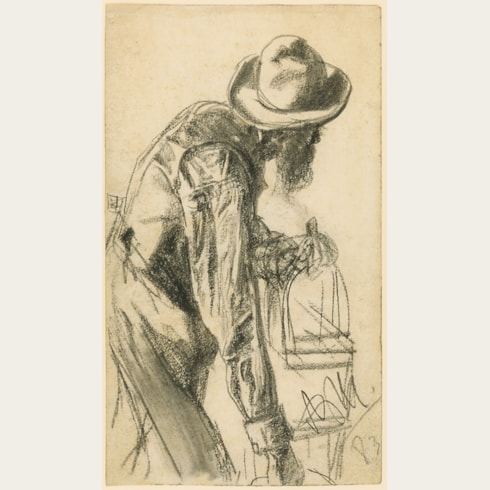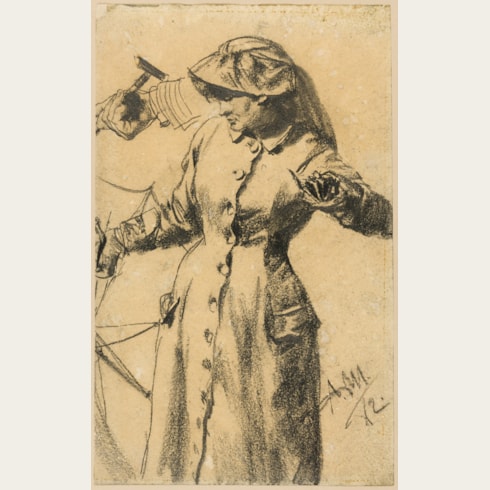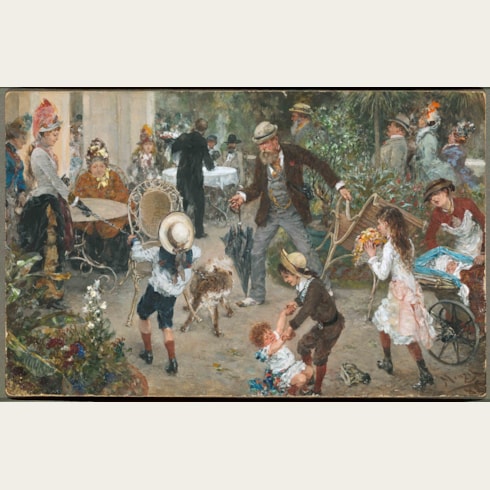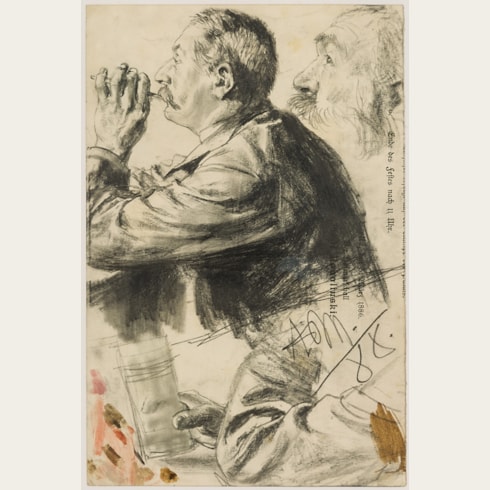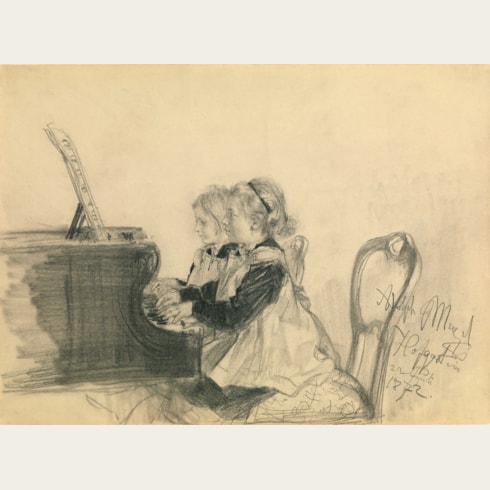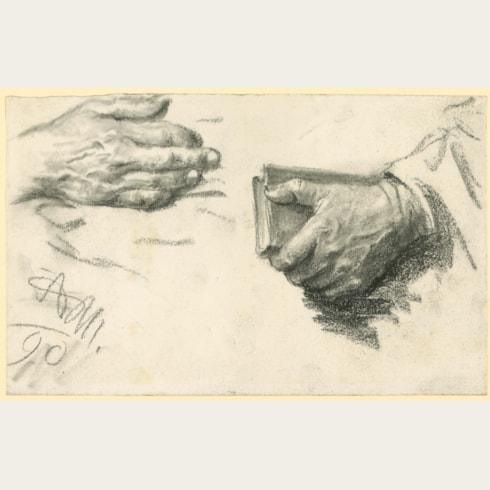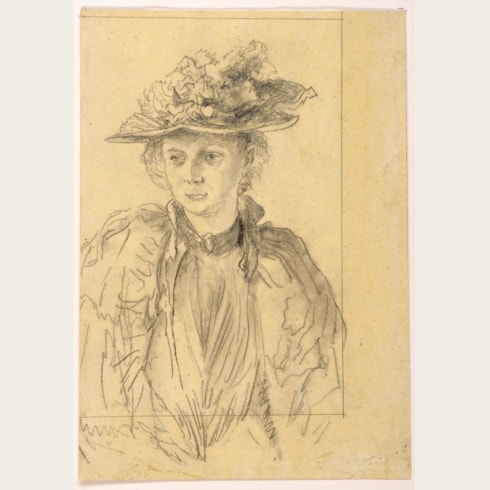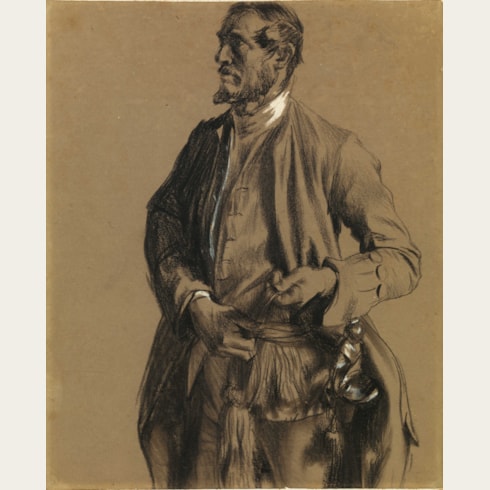Adolph MENZEL
(Breslau 1815 - Berlin 1905)
Studies of Three Men
Inscribed Erinnerung in red chalk at the lower right.
Further inscribed and dated Dieses Blatt ist eine Originalscizze / bes berühmten Berliner Maler Adolf / Menzel und stammt aus dem Besitz / einer auch ihm lieb gewesenen Frau, / die seiner Schwester. Ich kaufte dieses / aus des meisters jüngeren Jahren stam- / mende Original auf der Lepkeschen Auction / zu Berlin am 25. Mai 1886. / August Frhr. v. Minnigerode - Allerburg on the verso.
Also inscribed Original v. Adolph Menzel/ [?] [?] / Rudolph Lepke / f 20211 on the verso.
Further inscribed (under the numberf 20211) Nummer des Hauptbuchs des vereideten / Königl. Auctionators Rudolf Lepke on the verso.
267 x 326 mm. (10 1/2 x 12 7/8 in.)
This pastel sketch may also be stylistically and thematically related to a series of coloured chalk studies on brown paper by Menzel of the late 1840s and early 1850s. Many of these drawings depict electors and voters at assembly meetings, during the elections held in May 1848 for the national assembly in Frankfurt and the state assembly of Prussia, following the failed Revolution in Berlin earlier that year. Any male citizen over twenty-four years of age was eligible to take part in these parliamentary elections, as a primary voter, or urwähler. These Urwählen elected delegates who were in turn empowered to vote for one of the several hundred members of the national assemblies.
Menzel attended some of these meetings of voters in Berlin, which comprised men from different social classes. As he noted in a letter of May 1848 to his friend Carl Heinrich Arnold, ‘Yesterday it was election day throughout the State. In my ward voting went on from eight in the morning till nine at night (with a half-hour break at midday), which was fairly acceptable, since in some wards voting went on till midnight or two in the morning…These were the primary elections – this week those elected have got to choose their MPs for Prussia and Frankfurt. Leaving aside the importance of this event, there was so much that was interesting and fine to see in the preliminary assemblies alone!’
Menzel’s pastel studies of the voters were made some months after the elections, in January 1849, and were drawn from memory. (As in the present sheet, the artist often inscribed the word ‘Erinnerung’, meaning ‘recollection’ or ‘memento’, on those of his drawings which were not made from life, but which instead represented the artist’s memory of a particular event or motif.) The most finished of Menzel’s pastel studies is Primary Voters (DieUrwähler), dated January 1849, in the collection of the Museum Folkwang in Essen. A stylistically comparable study of Two Voters in Conversation, also in coloured chalks and dated 29 January 1849, is in the Nationalgalerie in Berlin, while a related pastel study of three figures on a bench, likewise dated January 1849, is in a private collection.
Adolph Friedrich Erdmann von Menzel began his career working in his father’s lithography shop in Breslau (now Wroclaw in Poland) and later in Berlin, where his family moved in 1830. A brief period of study at the Akademie der Künste in Berlin in 1833 seems to have been the sum total of his formal training, and he is thought to have taught himself how to paint. At the outset of his career he worked as an illustrator, his activity in this field perhaps best exemplified by a series of some four hundred designs for wood engravings produced to accompany Franz Kugler’s History of Frederick the Great, published in instalments between 1840 and 1842. During the late 1840’s and 1850’s he was occupied mainly with a cycle of history paintings illustrating the life of Frederick the Great.
In 1861 Menzel received his most important official commission, a painting of The Coronation of King William I at Königsberg, on which he worked for four years. In the following decade, his lifelong interest in scenes of contemporary life culminated in what is arguably his masterpiece as a painter; the large canvas of The Iron Rolling Mill, painted between 1872 and 1875 and immediately purchased by the National-Galerie in Berlin. The last three decades of his career saw Menzel firmly established as one of the leading artists in Germany, a prominent figure in Prussian society and the recipient of numerous honours including, in 1898, elevation to the nobility. In the late 1880’s he began to abandon painting in oils in favour of gouaches, although old age meant that these in turn were given up around the turn of the century. Yet he never stopped drawing in pencil and chalk, able always to find expression for his keen powers of observation. A retrospective exhibition of Menzel’s work, held at the National-Galerie in Berlin a few weeks after the artist’s death in 1905, included more than 6,400 drawings and almost 300 watercolours, together with 129 paintings and 250 prints.
A passionate and supremely gifted draughtsman, Menzel was equally adept at watercolour, pastel, gouache and chalk. He was also able to draw with either hand, although he seems to have favoured his left. An immensely prolific artist (over four thousand drawings by him, together with 77 sketchbooks, are in the collection of the Nationalgalerie in Berlin alone), it is said that Menzel was never without a sketchbook or two in his pocket. His friend Paul Meyerheim described the artist’s appearance: ‘In his overcoat he had eight pockets, which were partially filled with sketchbooks, and he could not comprehend that there are artists who make the smallest outings without having a sketchbook in their pocket…an especially large pocket was installed…to hold a leather case, which held a pad, a coupe of shading stumps and a gum eraser.’ Menzel was widely admired as a draughtsman by his contemporaries, both in Germany and abroad, and Edgar Degas, for one, is known to have owned at least one drawing by him.
Provenance
Ludwig August Wilhelm, Freiherr von Minnegerode-Allerburg, Berlin
His posthumous sale, Berlin, Rudolf Lepke, 16 October 1917, lot 132 (‘Ad. von Menzel. Ein Blatt mit drei männlichen Figurenstudien. Pastell. Bezeichnet: Erinnerung. Die Ecken abgeschnitten. H. 26 cm, Br. 32 cm. Gerahmt.’)
Anonymous sale, Munich, Sotheby’s, 30 June 1998, lot 48
Anonymous sale, Berlin, Villa Grisebach, 26 November 2014, lot 197
Private collection.

